The most extensive and complete collection of firematic artifacts anywhere in the world
Experience the story and evolution of firefighting as told through the world’s foremost treasury of vintage fire apparatus, firefighting gear, equipment and historical works of art. The Museum exhibits this vast and comprehensive collection in settings that are engaging and fun.
“The FASNY Museum of Firefighting is the nation’s foremost repository of firefighting history. No other fire museum or private collection in North America offers the sheer depth and authenticity of the wheeled treasure to be found in every corner of this remarkable public gallery in Hudson.
The range of exhibits – from primitive hand-tubs to sterling examples of contemporary 20th century motor fire apparatus and related historical artifacts – is unparalleled.”
~Walter M.P. McCall, noted author and fire apparatus historian
The Tools of the Trade
Spanner wrenches, fire extinguishers, life belts, bed keys, speaking trumpets, all the “tools of the trade” are represented in the fire equipment collection.
Trace the history and development of the art, science and social institution of firefighting by following the evolution of firefighting equipment. See how advancements in materials and techniques made firefighting duty safer and more effective over the course of four centuries. From rare Viking axes to telegraph alarm systems and beyond, the equipment collection is the Museum’s heart and soul.

Wooden Fire Rattles
These wooden warning devices were used in the 1700s to alert colonists of a fire in their community.
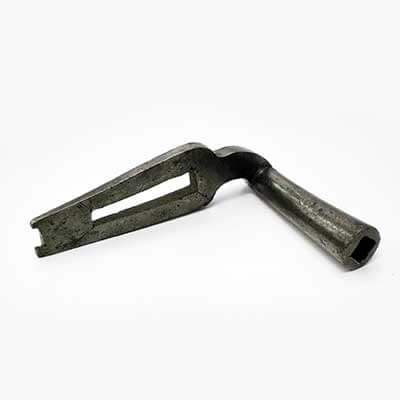
Bed Key
Firemen during this time carried a special tool called a bed key that could be used to quickly disassemble the beds of the day and thus carry them to safety.
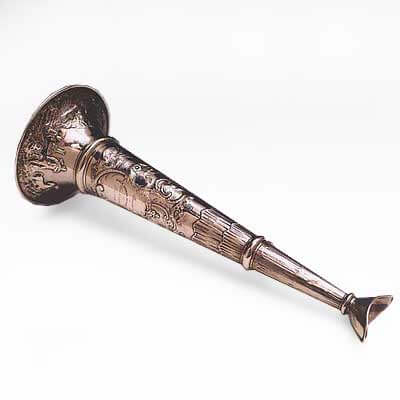
Speaking Trumpets
The primary use of a speaking trumpet was to amplify the speaker’s voice, so firemen could hear orders from command. They were also used as celebratory drinking vessels and sometimes as weapons in jurisdictional disputes.
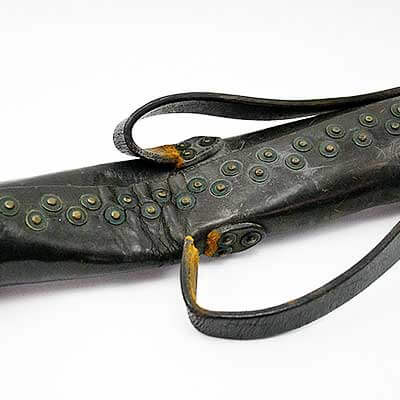
Leather Riveted Hose
A major innovation of the day, leather riveted hose was able to withstand higher pressure than the technology it replaced, allowing more water to be deployed in a shorter amount of time.
Apparatus
The FASNY Museum of Firefighting’s exhibit floor features these rare examples and 50+ more iconic pieces of fire apparatus at any given time.
For generations, experiencing the sights and sounds of firefighting vehicles has filled people of all ages with pride and excitement.
From hand-pulled bucket carts to horse-drawn steamers to the ladder trucks, pumpers and tankers of the modern era — the Museum’s collection is unmatched in size, scope and thrills. Visitors can even climb behind the wheel of the vintage “Discovery Trucks” in the designated hands-on exhibit area. Some of the highlights of the collection include:
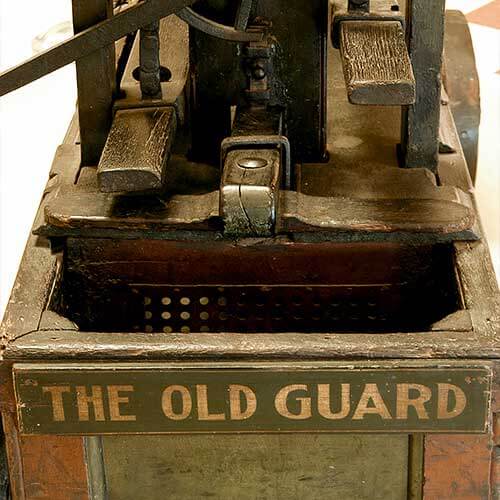
1731 Newsham Pumper
The oldest documented fire engine in New York state, this lead-lined wooden pumper was, incredibly, a huge step forward in firefighting during its time.

1855 John Rogers Double-Decker Pumper
Deep carving, stained glass lamps and elaborate oil paintings: This apparatus can only be described as exquisite. Add to this that it was one of the most powerful hand engines ever built, and you have what the Museum considers consider a historical treasure.
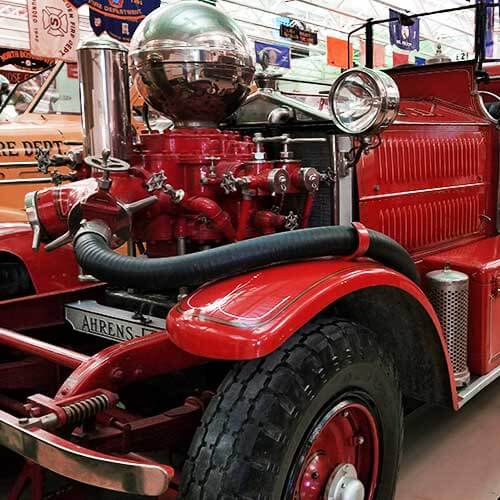
1928 Ahrens Fox Pumper
With its signature large protruding silver ball, this apparatus would have been coveted by any firehouse lucky enough to have her. Ahrens Fox has long been considered by many the “Cadillac” of fire apparatus, and this handsome pumper personifies that image.

1939 American LaFrance Scout 500 Series
As the design of this apparatus demonstrated so well, the 1930s was a decade full of futuristic art deco design. Although not everyone was impressed with what the future offered, as evidenced by the moniker given to this apparatus by some, “the ugly American.”
Fire Gear
The Museum’s wide array of field-used firefighting gear is perhaps the most personally relatable segment of the collection.
These coats, boots, helmets and other gear pay tribute to the brave men and women who wore them. The stories of these remarkable citizen-heroes come alive with every scratch and wear-mark.

Red Bibbed Shirts
Worn by the firemen of the 1800s, these shirts indentified a man as a fireman, which afforded him an elevated social status. Paired with dark trousers, leather boots and a helmet, this uniform was considered fashionable and was favored at social occasions of the time.
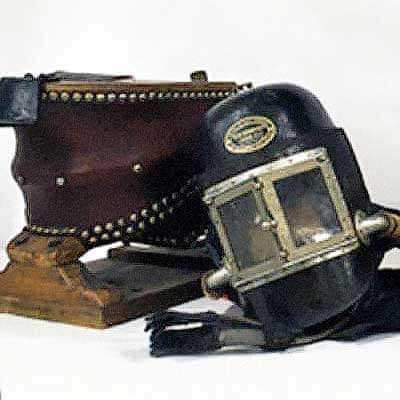
Self-Contained Breathing Apparatus
The evolution of breathing gear is represented by many rare and interesting artifacts. These include masks attached by an air line to a bellows, front-mounted breathing apparatus (military surplus) and modern carbon-wrapped cylinders.
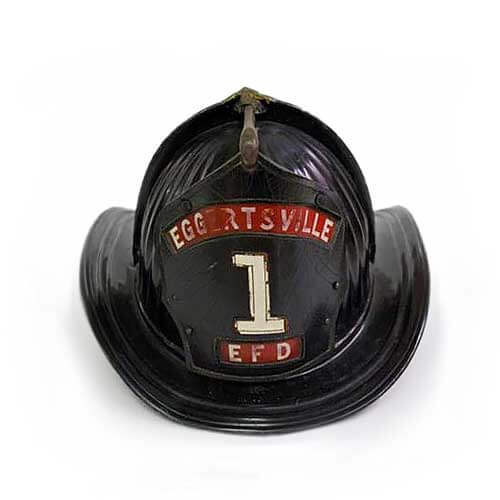
Head Gear
The Museum collection includes many unusual examples of head gear, including jockey caps, stovepipe hats and very early helmets (circa 1700s). The various designs of head gear are well represented, as well as the various materials used such as leather, aluminum and composite materials.

Protective Coat
Today’s turnout coats provide firefighters with state-of-the-art protection, thanks to their advanced materials and construction. This was not always the case. See the turnout coat’s evolution from colonial fashion statement to high-performance protective barrier.
Visual Art
The history of volunteer firefighting, expressed through the inspired works of renowned and everyday artists of the times.
The FASNY Museum of Firefighting’s extensive and eclectic visual art collection chronicles the story of volunteer fighters, their courageous contributions and selfless service to communities throughout the state of New York. Works include paintings, lithographs, sculpture and folk art. The Museum maintains and curates the most significant collection of oil-on-canvas firefighting portraiture found anywhere, including:
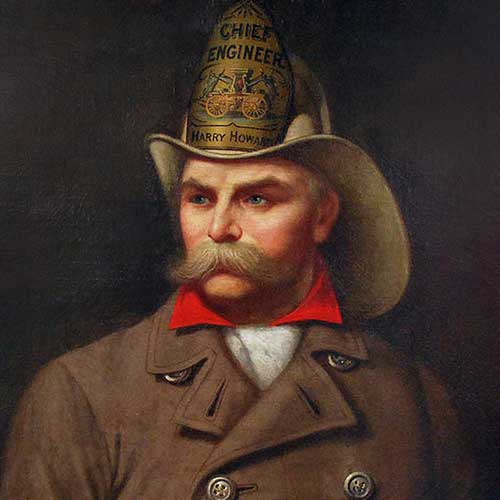
Portrait of Harry Howard
A giant figure in the history of firefighting, Harry Howard lends his name to the road leading to the Museum and Fireman’s Home. Howard became a legendary folk hero in his own time, renowned for his acts of bravery, strength and leadership. Howard’s legacy contributed significantly to the reverence and esteem in which citizens and communities hold firefighters to this day.
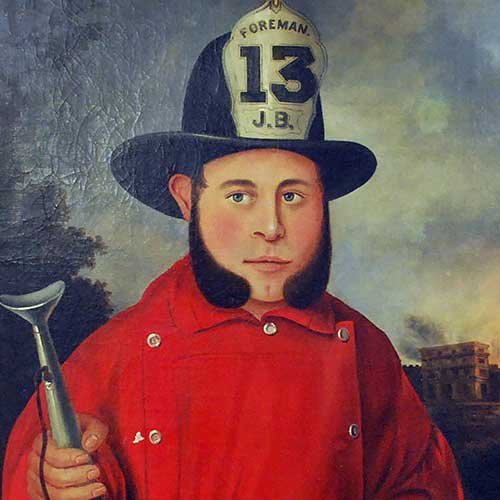
Portrait of John Baulch
In 1862, John Baulch was appointed “Fire Chief of the Southern Division of the Federal Army” during the Civil War. His duties included following the military and taking charge of all fire apparatus in Southern towns occupied by Northern troops.
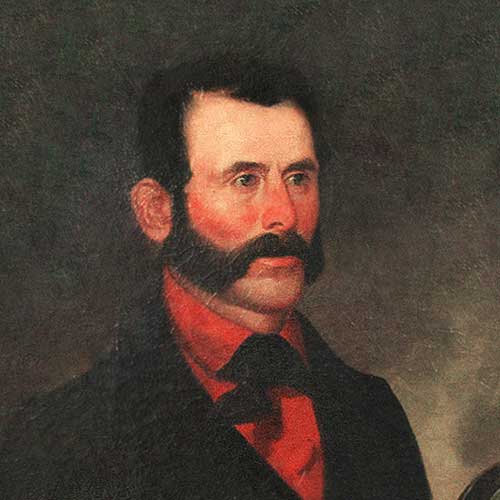
Portrait of Francis Clark
Perhaps the best words to describe Mr. Clark are “eager” and “devoted”: Sam Allen (foreman of Engine 44) gave the young Clark a suit of clothes for being the first on the tongue of an apparatus during a night alarm. The eager Clark showed up for the alarm without boots or pants on.
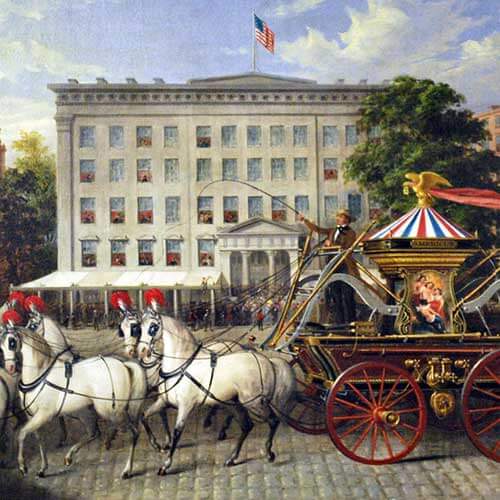
Firefighting Painting
Oil on canvas depicting Americus Engine No. 6 at Broadway and Chatham Street (now Park Row) in New York City. In the background are St. Paul’s Chapel and the Astor House on the west side of Broadway. Vesey Street runs between them.
Photography: From Daguerrotype to Digital
The faces and places behind New York’s rich firefighting heritage, captured and depicted using the photography technologies of the time.
With over 2,000 items related to firefighting, the Museum’s photography collection contains a wide variety of images that visually tell the story of firefighting through time.
More than 2,000 historic images of firefighters and firefighting — most of them rare and unpublished. The Museum’s collection of prints, slides, digital images and framed media includes portraits, action shots, fire scenes, pictures of apparatus and equipment and much more. The photography collection complements the museum’s other artifacts, vividly documenting New York state’s unsurpassed firefighting legacy.
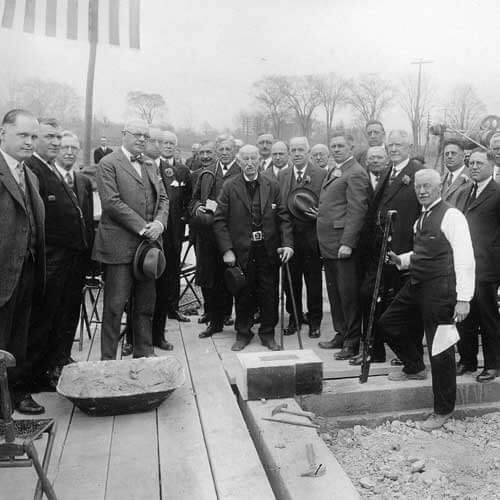
Laying of Cornerstone
Photograph of the laying of a cornerstone at a construction project. Based on the clothing and subject matter of the photo, this is believed to be of the construction of the Museum.

Horses & Steamer
A team of fire horses pulls a steamer to a fire call- date and location unknown.
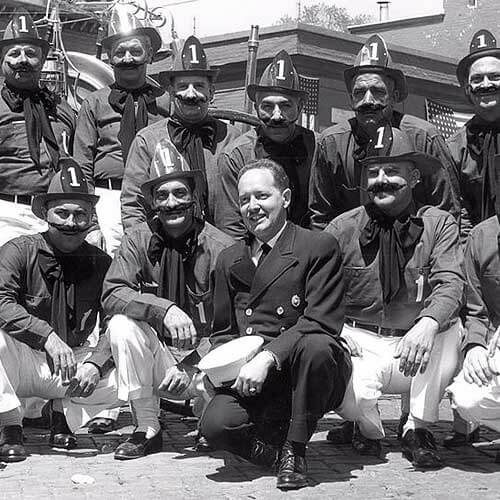
Edmonds Hose Group Photo
Members of JW Edmonds Hose pose with a circa 1800s hose cart that would later be given to Greenport FD and then to the FASNY Museum of Firefighting for its collection. The firefighters’ unusual garb and “facial hair” were to celebrate the fire company’s anniversary in 1959.

Group of Firefighters c. 1900
C. 1900 photograph of three firefighters posing for a portrait from the Hudson, New York fire department.
Library and Archives
The courageous feats and colorful figures of New York’s firefighting heritage speak volumes — in fact, the Museum has more than 6,000.
Handwritten journals, periodicals, general subject books, documents, correspondence, service manuals and more — the Museum’s library and archives is a treasure trove of firefighting information and history. The library is available for research to the general public by appointment. To make a research appointment, please contact the Museum — Museum staff will reply with a booking number and confirmation.

Our Firemen
By A.E. Costello. This illustrated volume chronicles the history of the NYC fire departments from 1609 until 1887. First published in 1887, this is a rare first edition.
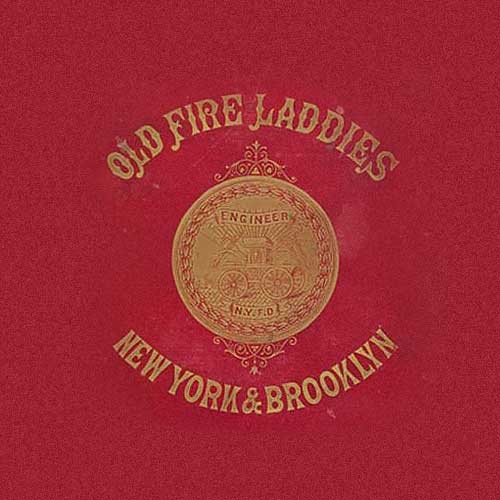
Reminiscences of the Old Fire Laddies
By J. Frank Kernan: This volume colorfully describes the volunteer fire departments of New York and Brooklyn. First published in 1885, this is a rare first edition.
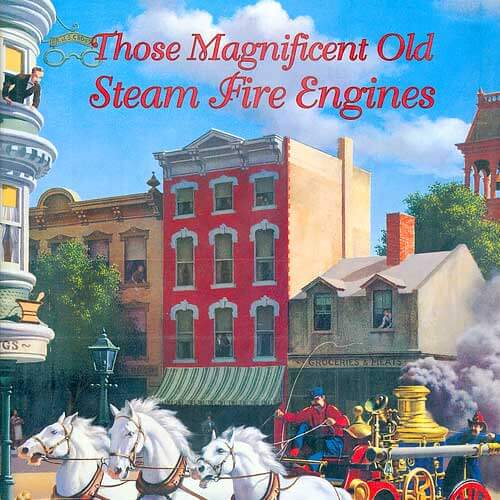
Those Magnificent Old Steam Fire Engines
By W. Fred Conway. Although a modern volume, having been published in 1996, this book is the definitive book on the steam fire engine, chronicling the history of these machines, the companies that produced them and where many of them are today.
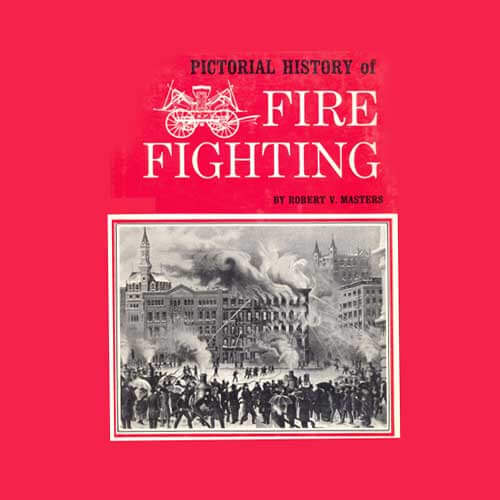
A Pictorial History of the Fire Engine, Volumes 1 and 2
Another example of modern volumes (Volume 1 was published in 1997 and Volume 2 in 1999) these in-depth books feature 300 and 400 pages, respectively, and are an essential to any fire service library collection.

